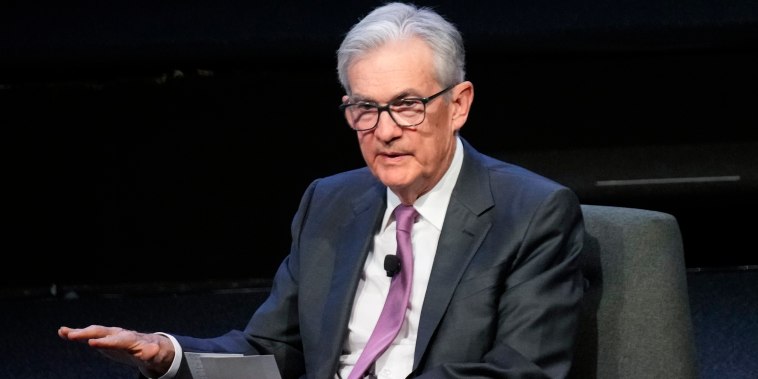The Federal Reserve left interest rates unchanged Wednesday as it continues to track inflation and the health of the economy.
The central bank voted unanimously to leave its primary interest rate in the range of 5.25% to 5.50%. U.S. interest rates are the highest they’ve been in 23 years. That means interest rates on loans such as mortgages have gone up sharply, and so have payments on Treasury bonds and interest-bearing accounts.
In a statement, the Federal Reserve’s Federal Open Market Committee said the economy continues to grow at a strong pace and the jobs market remains strong as well, although it has weakened in recent months. It added that inflation remains high.
The Fed meets eight times a year, and it has now left rates unchanged for two meetings in a row. That hadn’t happened since March 2022, when it started raising rates at a rapid clip.
Greg McBride, chief financial analyst for the financial services company Bankrate, said the Fed didn’t need to raise its benchmark rate because other interest rates have continued to rise.
‘The rise in long-term interest rates in recent months has had the same desired effect of monetary tightening, effectively doing some of the Fed’s dirty work for them,’ he said in a statement to NBC News.
The Fed made a similar point in its statement, noting that tighter financial and credit conditions would likely crimp spending by households and businesses.
Since the Federal Reserve’s last meeting in September, new data has shown that inflation is continuing to gradually come down. It’s still not clear if it’s coming down fast enough, or if it will continue to decline and get to the 2% annual level the Fed says it wants to see.
Projections by members of the Federal Open Market Committee, which makes decisions about raising or lowering interest rates, show that policymakers think it will take until 2025 or 2026 to get inflation to that level.
A sculpture of an eagle looks out from behind protective construction wrapping as the Federal Reserve Board building in Washington undergoes renovations on Oct. 23.J. Scott Applewhite / AP
The Federal Reserve raised interest rates sharply from March 2022 through this summer as it tried to get inflation under control. Inflation had hit 40-year highs in mid-2022, peaking at 9.1% annually. By contrast, that rate was 3.7% in September.
Prices for most items haven’t come down over that time, but the slower increases have been a relief to some consumers. Wages have been rising faster than inflation lately, which makes it easier for people to afford goods and services.
In an ideal scenario, inflation would continue to come down even as the economy keeps growing indefinitely. Markets are concluding that this means interest rates will probably stay high for a long time.
However, it remains to be seen if inflation will keep declining the way the Fed wants, or if the central bank will need to raise interest rates further to make sure that happens. So far, the U.S. economy has stayed generally strong even though interest rates have spiked. The job market has also cooled off somewhat, but remains strong as well.
That’s good news in most cases, but faster economic growth can contribute to greater inflation. Some experts are worried inflation could flare up again and want the Fed to raise rates further to prevent that from happening.
The Fed itself is keeping its options open. Fed Chair Jerome Powell has long said that it will be ‘data dependent’ and make its decisions based on how circumstances develop.
According to the CME Group’s FedWatch Tool, which tracks futures trading, investors think there’s about a 1 in 4 chance that the Fed will raise rates in December during the Federal Open Market Committee’s final meeting of the year.

